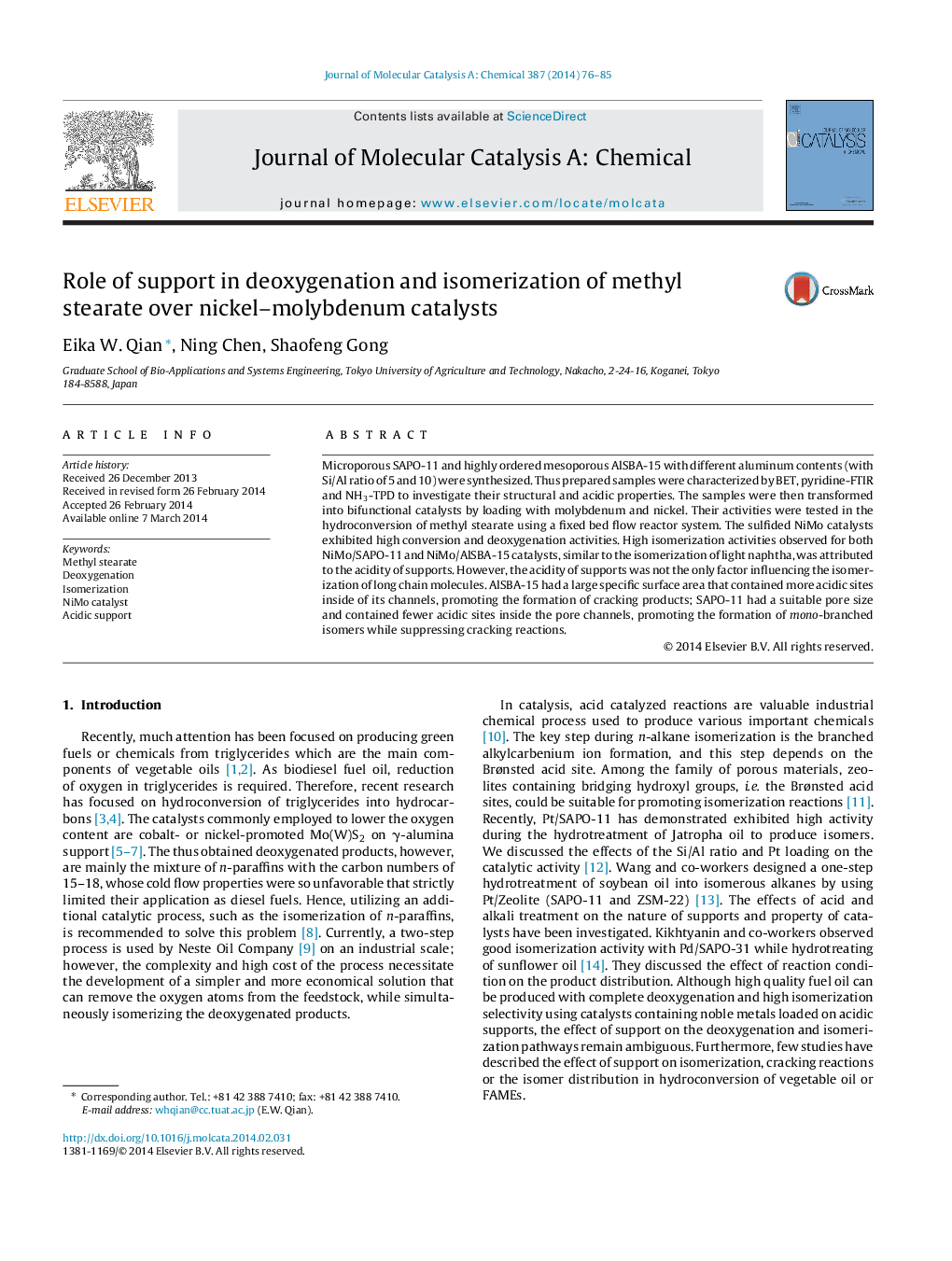| Article ID | Journal | Published Year | Pages | File Type |
|---|---|---|---|---|
| 65450 | Journal of Molecular Catalysis A: Chemical | 2014 | 10 Pages |
•NiMo/SAPO-11 is active in simultaneous hydrodeoxygenation and hydroisomerization.•NiMo/AlSBA-15 exhibit strong cracking activity.•Hydroisomerization on NiMo/SAPO-11 and NiMo/AlSBA-15 occurs via different routes.•Acidity as well as structure affects isomerization of long chain molecule.
Microporous SAPO-11 and highly ordered mesoporous AlSBA-15 with different aluminum contents (with Si/Al ratio of 5 and 10) were synthesized. Thus prepared samples were characterized by BET, pyridine-FTIR and NH3-TPD to investigate their structural and acidic properties. The samples were then transformed into bifunctional catalysts by loading with molybdenum and nickel. Their activities were tested in the hydroconversion of methyl stearate using a fixed bed flow reactor system. The sulfided NiMo catalysts exhibited high conversion and deoxygenation activities. High isomerization activities observed for both NiMo/SAPO-11 and NiMo/AlSBA-15 catalysts, similar to the isomerization of light naphtha, was attributed to the acidity of supports. However, the acidity of supports was not the only factor influencing the isomerization of long chain molecules. AlSBA-15 had a large specific surface area that contained more acidic sites inside of its channels, promoting the formation of cracking products; SAPO-11 had a suitable pore size and contained fewer acidic sites inside the pore channels, promoting the formation of mono-branched isomers while suppressing cracking reactions.
Graphical abstractFigure optionsDownload full-size imageDownload high-quality image (208 K)Download as PowerPoint slide
